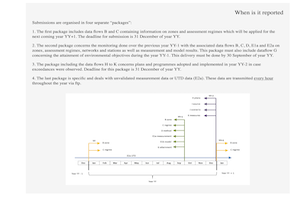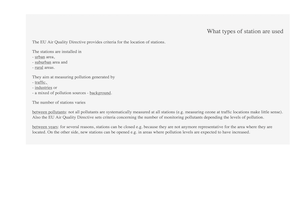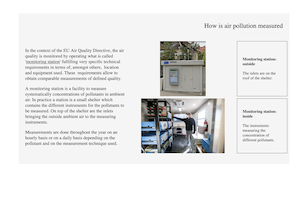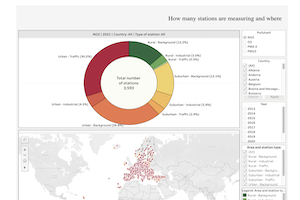The Air Quality e-Reporting has been established under Directive 2008/50/EC of the European Parliament and of the Council of 21 May 2008 on ambient air quality and cleaner air for Europe. It is in fact the continuation and extension of previous reciprocal exchange of data and information on air quality established by three previous european Decisions (75/441/EEC, 82/549/EEC and 97/101/EC). The reporting obligations also applies to Directive 2004/107/EC of the European Parliament and of the Council of 21 May 2008 of 15 December 2004 relating to arsenic, cadmium, mercury, nickel and polycyclic aromatic hydrocarbons in ambient air. These two Directives have been amended by Directive 2015/1480.
In its Article 27, the Air Quality Directive 2008/150/EC requires that “Member States shall ensure that information on ambient air quality is made available to the Commission within the required timescale as determined by the implementing measures referred to in Article 28(2).“
The Article 28(2) states that “(the) Commission shall …determine the additional information to be made available by Member States pursuant to Article 27 as well as the timescales in which such information is to be communicated. The Commission shall also identify ways of streamlining the way data are reported and the reciprocal exchange of information and data from networks and individual stations measuring ambient air pollution within the Member States …“.
In other words, the principle of the Air Quality e-Reporting is established by the Directive 2008/50/EC while the technical and practical modalities are to be fixed in a subsequent legal instrument.
This is the object of the Commission Implementing Decision 2011/850/EU (also known as the “IPR Decision”) of 12 December 2011 laying down rules for Directives 2004/107/EC and 2008/50/EC of the European Parliament and of the Council as regards the reciprocal exchange of information and reporting on ambient air quality.
In practice the IPR Decision fixes the nature and content of data and information to be reported, the formats and encoding to be followed as well the reporting time schedules.







